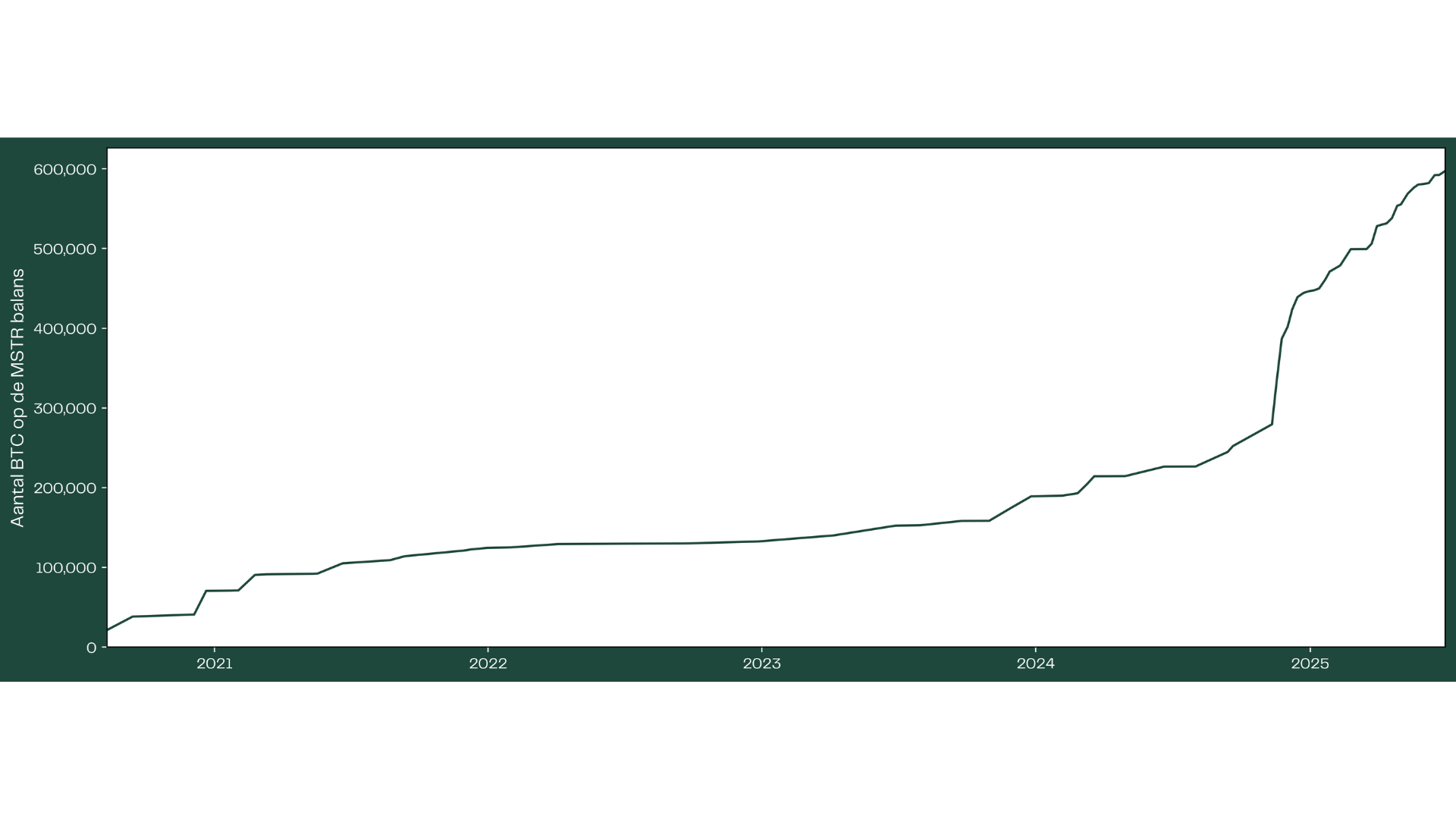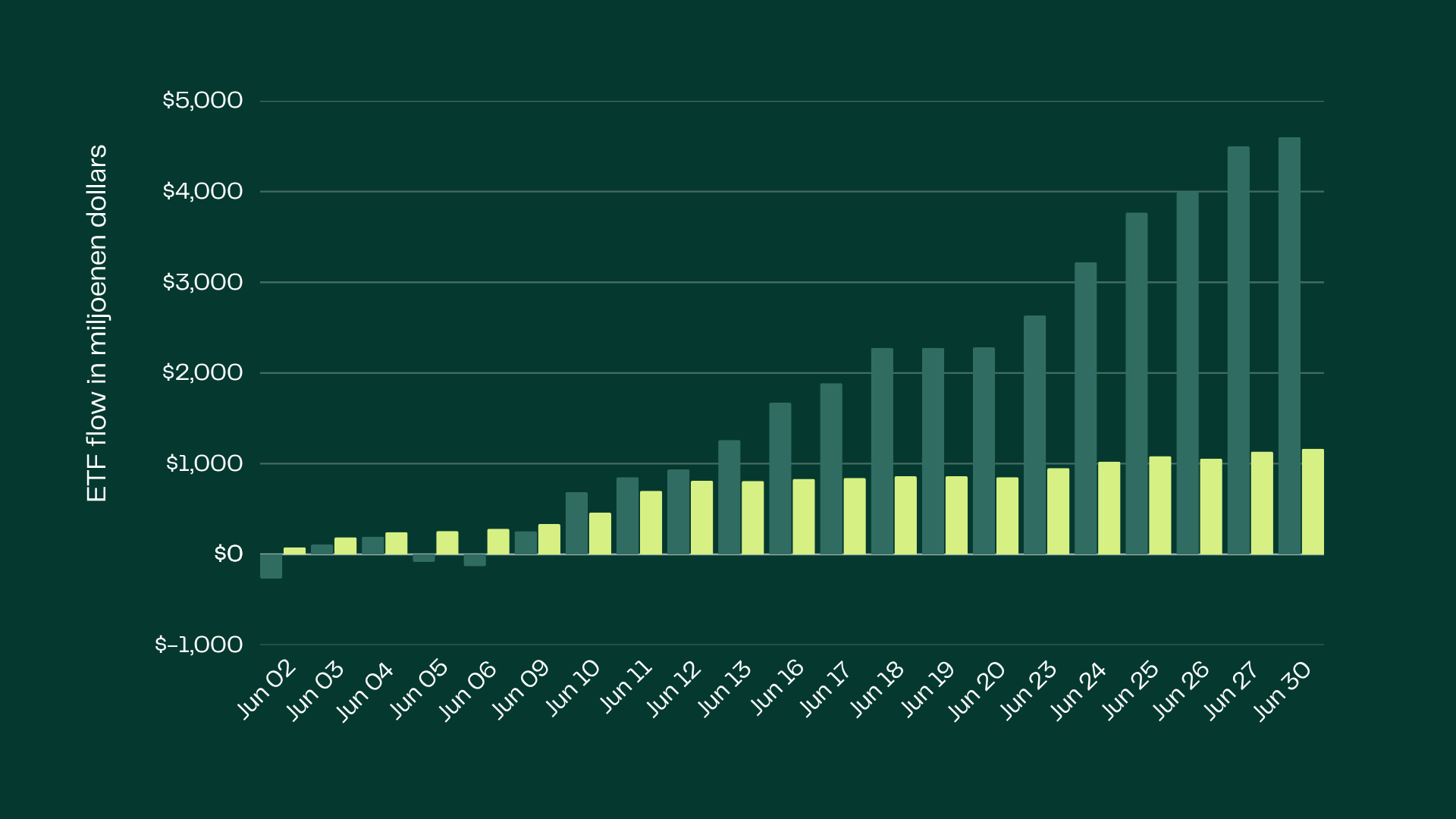"Perhaps instability is what makes this the most stable crypto market ever."

1 July 2025
Monthly: June 2025
Summary
After the fallout between Trump and his (ex-?)buddy Musk, the Daddy left his mark on the Israel–Iran conflict by actively “mediating.” This de-escalation, combined with relentless bitcoin purchases by listed companies, helped prevent the crypto market from sliding deeper than necessary. Will optimistic macroeconomic expectations now bring summer fireworks?

In a month marked by political and geopolitical turmoil, it is ironic that the crypto spotlight was on stablecoins. Circle, the issuer of USDC, saw its share price nearly increase tenfold within two weeks following its IPO. Meanwhile, the U.S. introduced the GENIUS Act, finally delivering concrete regulation for stablecoins.
Is this the long-awaited decoupling we have been hoping for all these years? If so, the world may as well fall apart next month. Perhaps instability is exactly what makes this the most stable crypto market ever.
Stability in the headlines only
Unfortunately, actual stability in the crypto market was hard to find. While in May we still wondered whether bitcoin would hit new price records, it had other plans and briefly dipped below the symbolic 100,000-dollar mark. We will not even start on altcoins.
There was some reassurance in the activity of more traditional investors. A total of 5.8 billion dollars flowed into spot BTC and ETH ETFs. These positions can now be used as collateral for loans at JPMorgan Chase, the largest bank in the U.S.

Figure 1: Number of bitcoins on Strategy’s (MSTR) balance sheet
Listed companies such as (Micro)Strategy, Metaplanet, and possibly even Trump Media once again added significant amounts of bitcoin to their balance sheets.

Figure 2: Inflows into U.S. spot Bitcoin and Ether ETFs in June, expressed in millions of dollars
It is clear that this increasing adoption does not yet lead to explosive price charts. For that, we will need to wait until the seemingly endless pool of retail investors springs into action. What we do see, however, is a stable base of demand that can absorb shocks when needed. That was the case this month.
Trumpian peace
Speaking of explosive charts, take the oil market. As the conflict between Israel and Iran intensified, Iran threatened to block the Strait of Hormuz, a vital route through which around 20 percent of the world’s hydrocarbons are shipped. This sparked fears of extreme scarcity and higher prices. Since oil is a key input for many industries, concerns about the global economy quickly followed.
Fortunately, the threat was short-lived. President Trump remembered that Alfred Nobel once invented dynamite and promptly made an authentic bid for the Peace Prize. Despite the recently declared ceasefire, there are still risks that could affect the crypto market.
Then there is the trade war. Yes, that is still ongoing. Although most media have gone quiet on the issue, the 90-day pause on import tariffs is nearly over. On July 9, we will find out whether Trump will extend his peacemaking efforts or hold firm on his earlier tariff threats.
Expectations are shifting to match the data
From a macroeconomic perspective, there is little reason for Trump to change course. Inflation remains subdued and is now visibly influencing economic expectations. Consumer confidence, for example, came in significantly higher than forecast.
Last month we wondered whether observable hard data would begin to align with expected soft data. For now, it seems the expectations are adjusting in response to observations. That is a highly positive signal for the economy and one that is reinforced by the Federal Reserve.
The U.S. central bank said it still expects inflation to rise, but it is also willing to cut interest rates sooner if inflation stays low or eases. Such a move could give risk markets, including crypto, a much-needed boost.
What we will be watching in July
In the coming month, we hope to find answers to the following questions:
- Will tensions in the Middle East escalate or will the ceasefire hold?
- Will Trump impose the planned import tariffs or extend the pause?
- Will inflation pick up this summer, as the Federal Reserve expects?
Download the Monthly: June 2025
The PDF is available in Dutch only.

Our website uses cookies
We use cookies to personalize content and advertisements, to offer social media features and to analyze our website’s traffic. We’ll also share information about your usage with our partners for social media, advertising and analysis. These partners can combine this data with data you’ve already provided to them, or that they’ve collected based on your use of their services.